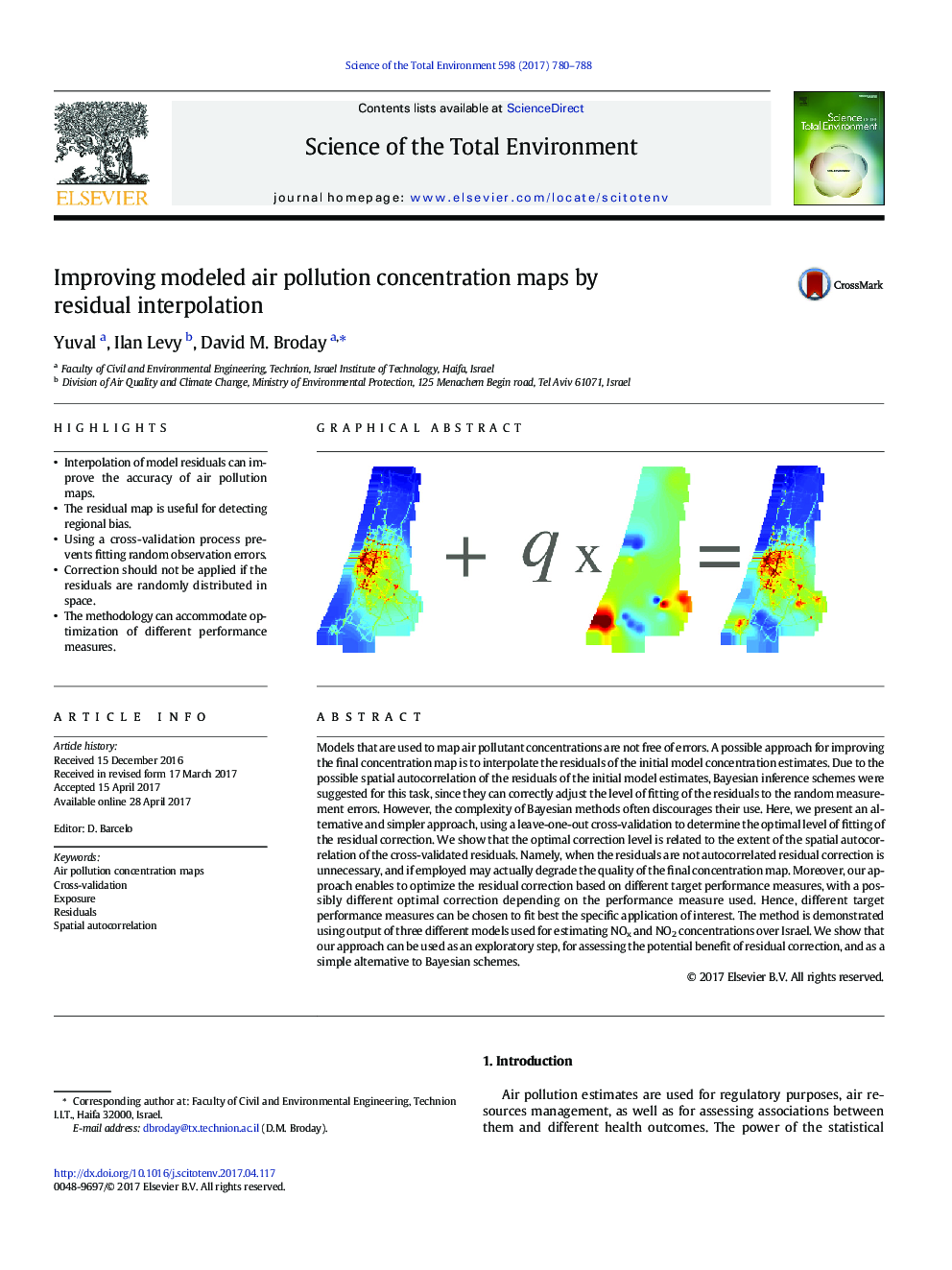| کد مقاله | کد نشریه | سال انتشار | مقاله انگلیسی | نسخه تمام متن |
|---|---|---|---|---|
| 5750990 | 1619699 | 2017 | 9 صفحه PDF | دانلود رایگان |
- Interpolation of model residuals can improve the accuracy of air pollution maps.
- The residual map is useful for detecting regional bias.
- Using a cross-validation process prevents fitting random observation errors.
- Correction should not be applied if the residuals are randomly distributed in space.
- The methodology can accommodate optimization of different performance measures.
Models that are used to map air pollutant concentrations are not free of errors. A possible approach for improving the final concentration map is to interpolate the residuals of the initial model concentration estimates. Due to the possible spatial autocorrelation of the residuals of the initial model estimates, Bayesian inference schemes were suggested for this task, since they can correctly adjust the level of fitting of the residuals to the random measurement errors. However, the complexity of Bayesian methods often discourages their use. Here, we present an alternative and simpler approach, using a leave-one-out cross-validation to determine the optimal level of fitting of the residual correction. We show that the optimal correction level is related to the extent of the spatial autocorrelation of the cross-validated residuals. Namely, when the residuals are not autocorrelated residual correction is unnecessary, and if employed may actually degrade the quality of the final concentration map. Moreover, our approach enables to optimize the residual correction based on different target performance measures, with a possibly different optimal correction depending on the performance measure used. Hence, different target performance measures can be chosen to fit best the specific application of interest. The method is demonstrated using output of three different models used for estimating NOx and NO2 concentrations over Israel. We show that our approach can be used as an exploratory step, for assessing the potential benefit of residual correction, and as a simple alternative to Bayesian schemes.
276
Journal: Science of The Total Environment - Volume 598, 15 November 2017, Pages 780-788
